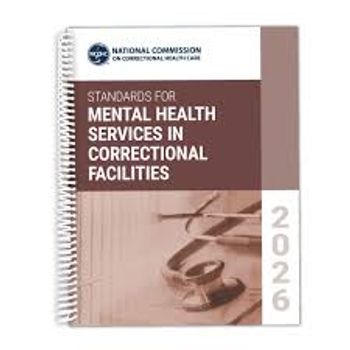
- Vol 31 No 2
- Volume 31
- Issue 2
Correctional Psychiatry: Challenges and Rewards
Practicing psychiatry in a correctional environment differs from traditional outpatient and inpatient venues and presents unique challenges. It can be a rewarding choice of workplace.
Over the past several decades, incarcerations in the US have increased significantly, both in absolute numbers and as a percentage of the population.1 Approximately 1% of the adult population is incarcerated at any given time.2 In addition to the overall increase, the proportion of jail and prison inmates with mental illness has increased as well. The reasons for the increase in the incarceration of people with mental illness have been examined extensively, and they are a matter of significant debate in the research community. Possible contributing factors include deinstitutionalization, inadequate community-based treatment, and high rates of arrest for drug offenses.3-5
According to a 2006 study by the US Bureau of Justice Statistics, 49% of jail inmates had symptoms of both mental illness and a comorbid substance abuse disorder.3 Other studies have found rates of severe mental disorders, including psychotic disorders, bipolar disorder, and MDD, ranging from 10% to 27% of jail and prison inmates.4 The expansion of incarcerations in the US has affected a significant number of people with mental disorders. A recent study found that 27.5% of patients with serious mental illness were involved with the criminal justice system in some fashion during a 2-year period-62% of this group were arrested and 57.5% spent time behind bars.5
The increased incarceration of people with mental illness has created an increased need for mental health treatment in correctional settings. Practicing psychiatry in a correctional environment differs from traditional outpatient and inpatient venues and presents unique challenges. However, it can also be a rewarding choice of workplace.
The setting determines the issues
Although the terms “jail” and “prison” are often used interchangeably in the media and in everyday conversation, they have specific meanings. A jail is designed to house defendants who have been charged with crimes and are awaiting trial, as well as those who are serving short sentences, typically for misdemeanor convictions. Such sentences typically range from a few weeks up to 1 year. A jail run by a city is usually only a “lockup,” or short-term holding area; the type of jail where inmates remain for weeks or months is most often operated by a county.
Prisons, in contrast, are run by a state or the Federal Bureau of Prisons and house inmates who have been convicted of a felony. Prison sentences in the US are usually of at least 12 months’ duration. The turnover of inmates is much higher in jails than in prisons because of the much shorter duration of incarceration. Since they have different purposes, jails and prisons are designed differently, both in their physical layout and in the types of educational, recreational, work, and treatment programs that they offer.
The delivery of psychiatric services differs between jails and prisons, due to reasons for incarceration and duration of stay. For example, because jails receive individuals directly from the community after arrest, medical and mental health staff frequently encounter substance intoxication and withdrawal. These syndromes are less common in prisons, although they can still occur, since prison inmates can obtain illicit drugs as contraband, make prison-brewed alcohol, or accumulate prescribed medications for abuse. A jail psychiatrist will most likely perform more new evaluations than a psychiatrist working in a prison, whose caseload will change more slowly.
Most mental health treatment in the correctional setting takes place on an outpatient basis. On the surface this may seem counterintuitive, given that the patients reside in the facility. However, the typical jail or prison housing unit does not offer 24-hour nursing supervision or other features of an inpatient hospital. The inpatient/outpatient distinction is also important for issues such as the right to refuse medications and procedures to authorize involuntary medication. Jails and prisons vary widely in how they provide for inpatient psychiatric care when needed. Some jails and prisons have their own inpatient hospital unit. A prison that does not offer this level of care might be able to transfer the inmate to another state facility, such as a state hospital, or to a prison with an inpatient unit. For many jails, patients in need of acute inpatient care must be transferred to a public hospital or contracted private hospital. Securing such a transfer can pose significant difficulties, given concerns about the patient’s potential for violent behavior or attempted escape.
Challenges for psychiatrists
It is commonly said that when working in a jail or prison, the psychiatrist is a guest in corrections’ “house.” This is not entirely true, since access to health care, including mental health treatment, is guaranteed to inmates under the US Constitution. However, the parameters of care delivery are often affected to a significant degree by the needs and priorities of the correctional facility. The first priority of every correctional institution is security.
The successful correctional psychiatrist has to learn to work with correctional staff members and must always keep security in mind. Security concerns can override the psychiatrist’s priorities when it comes to issues such as patient housing assignments, the timing of appointments, or whether a given patient can be seen face-to-face or must be seen at the cell door. During a “lockdown,” one may not be able to see any patients at all. A correctional institution does not operate like an inpatient psychiatric unit. Although in any well-run facility there is collaboration and teamwork between mental health and correctional staff, psychiatrists working in correctional facilities must get used to not having the final say about a variety of issues.
Limitations on the confidentiality one is accustomed to in noncorrectional work are another challenge. It is not unusual in a jail setting for custody personnel to retain direct visual contact during a clinical interview for safety reasons, especially with inmates who are agitated, hostile, or exhibiting disorganized behavior. When it is necessary to conduct an interview at the cell door, cell mates and other nearby inmates are likely to hear one or both sides of the discussion. While the correctional psychiatrist should take all feasible steps to protect confidentiality, it is often not possible.
Considering the high rates of substance abuse disorders among the incarcerated population, it is not surprising that misuse of medications is common in correctional settings and poses another challenge for the psychiatrist. Some correctional facilities ban the prescription of stimulant medications for the treatment of ADHD because of their obvious abuse potential. Others allow their use under tight control.6 Prescription of benzodiazepines on an ongoing as opposed to short-term basis is also uncommon.
In addition to stimulants and benzodiazepines, a number of other psychiatric medications are sought after and bartered for nonmedical use. Bupropion and quetiapine are the best known. Bupropion can be crushed and snorted to obtain a stimulant-like effect, while quetiapine is typically desired as a soporific.7,8 Analogous to the “red flags” seen with the abuse of narcotic pain medications in the community, the correctional psychiatrist is likely to encounter patients who report a long history of depression. They will say they have tried every antidepressant and experienced burdensome adverse effects with all of them, except for bupropion, which is the only medication that works for them. In response to inappropriate use, some correctional institutions and systems have restricted these medications or even removed them from the formulary.7 Other medications that may not be restricted, but that inmates have been known to misuse, include trihexyphenidyl, buspirone, gabapentin, olanzapine, and venlafaxine. The correctional psychiatrist must always be alert for inmates seeking unnecessary prescriptions, either to use themselves or to trade with others.
All psychiatrists are familiar with malingering. In the community, patients may malinger to obtain medications, a hospital bed, or disability payments. In the correctional setting, malingering is an ever-present concern. In addition to seeking medications, jail inmates may feign psychosis or other severe symptoms in an attempt to delay or avoid prosecution. Reporting suicidal ideation and engaging in actual or potentially self-injurious behaviors, such as cutting the wrist or putting a noose around the neck, are common in both jails and prisons to obtain transfer to a different area of the institution, for example, when the inmate is being threatened by others.
The suicide rate in the jail population is significantly higher than in the general population, although this is not necessarily true of US prisons.9 In any event, it is critical to make a careful assessment of each patient who presents with suicidal ideation. Many inmates are impulsive and have limited coping skills. In addition, the high rate of malingering in incarcerated populations creates a risk of false-positives; that is, inmates with genuine mental illness can be incorrectly labeled as malingerers, which can result in delay of needed treatment.
Many people with mental illness who are incarcerated face multiple, severe obstacles to successful treatment. Approximately 40% of the incarcerated population do not have a high school diploma.10 Rates of substance abuse, lack of insight into the need for treatment, and medication non-adherence are significant.11 Recidivism is high, even with patients who had previously achieved stability in jail as a result of abstinence from drugs and provision of appropriate medications. Such frustrating experiences can lead to physician burnout.
Working with patients who have been accused of or convicted of violent, even notorious crimes, or of offenses such as child molestation or child pornography, can be quite challenging, in terms of maintaining empathy for the patient and the motivation to do one’s best to assess and treat the psychiatric illness. Feelings of negative countertransference can become even stronger when the patient is suspected of malingering.
Rewards of correctional psychiatry
In addition to its challenges, correctional psychiatry can be rewarding. Many incarcerated patients have very complex histories and comorbidities, including childhood trauma, history of foster care placement, long-term poverty and homelessness, substance abuse, traumatic brain injury, and other medical problems related to chronic substance abuse and/or lack of regular medical care. The intellectual challenge of evaluating and treating such patients can be quite satisfying. In addition to intellectual stimulation, the opportunity to make a positive difference for socially marginalized, severely ill patients who have been unable or unwilling to access care in the community, and to see their condition improve, keeps many correctional psychiatrists engaged and motivated.
Determining when an inmate is malingering-and what to do about it-is another type of professional “puzzle” confronted by the correctional psychiatrist. Inmates may have the opportunity to observe genuinely ill patients in their midst, and they also give each other advice on how to successfully fool the “psych.” As a result, their efforts are not always clumsy and obvious.
In the correctional setting, it is not always possible to simply dismiss the malingering patient, and assume he or she is unlikely to ever cross your path again. Unless the inmate is released from the facility, he is likely to return to you or one of your colleagues soon. Malingering is, by definition, a rational response to difficult or stressful circumstances. If the psychiatrist approaches the malingering inmate as engaging in a form of communication of distress, rather than simply as a nuisance or troublemaker, it may be possible to problem-solve with him, possibly in collaboration with correctional staff, to help him resolve his difficulties so that he no longer has to resort to invented claims of psychiatric symptoms.
Practicing psychiatry effectively in the correctional setting requires some significant adjustments. While some gain experience through elective rotations during residency or required placements during a forensic psychiatry fellowship, most correctional psychiatrists learn the unique features of the correctional environment “on the job.” Once the challenges are appreciated and the psychiatrist has learned to navigate them, working with incarcerated patients with mental illness can provide both an interesting professional challenge and an opportunity to help some of the most disadvantaged members of society.
Disclosures:
Dr Simpson is Staff Psychiatrist at the Los Angeles County Jail Mental Health Service and Clinical Associate Professor in the Department of Psychiatry and Behavioral Sciences at the University of Southern California Keck School of Medicine in Los Angeles. He reports no conflicts of interest concerning the subject matter of this article.
References:
1. Dumont DM, Brockman B, Dickman S, et al. Public health and the epidemic of incarceration. Ann Rev Pub Health. 2012;33:325-339.
2. Appelbaum PS. Lost in the crowd: prison mental health care, overcrowding, and the courts. Psychiatr Serv. 2011;62:1121-1123.
3. James DJ, Glaze LE. Mental health problems of prison and jail inmates. Washington, DC: Bureau of Justice Statistics. http://www.bjs.gov/content/pub/pdf/mhppji.pdf. Revised December 14, 2006. Accessed January 27, 2014.
4. Lamb HR, Weinberger LE, Marsh JS, Gross BH. Treatment prospects for persons with severe mental illness in an urban county jail. Psychiatr Serv. 2007;58:782-786.
5. Swanson JK, Frisman LK, Robertson AG, et al. Costs of criminal justice involvement among persons with serious mental illness in Connecticut. Psychiatr Serv. 2013;64:630-637.
6. Appelbaum KL. Attention deficit hyperactivity disorder in prison: a treatment protocol. J Am Acad Psychiatry Law. 2009;37:45-49.
7. Tamburello AC, Lieberman JA, Baum RM, Reeves R. Successful removal of quetiapine from a correctional formulary. J Am Acad Psychiatry Law. 2012;40:502-508.
8. Hilliard WT, Barloon L, Farley P, et al. Bupropion diversion and misuse in the correctional facility. J Correct Health Care. 2013;19:211-217.
9. Tartaro C, Lester D. Suicide and Self-Harm in Prisons and Jails. Lanham, Md: Lexington Books; 2009.
10. Harlow CW. Education and Correctional Populations. Washington, DC: Bureau of Justice Statistics. http://www.bjs.gov/content/pub/pdf/ecp.pdf. Revised April 15, 2003. Accessed January 27, 2014.
11. Lamb HR, Weinberger LE. Some perspectives on criminalization. J Am Acad Psychiatry Law. 2013;41:287-293.
Articles in this issue
over 11 years ago
Global Child Mental Healthalmost 12 years ago
Mental Illness vs Brain Disorders: From Szasz to DSM-5almost 12 years ago
Medicare to Drop Antidepressants as Part D “Protected Class”almost 12 years ago
Can You Trust Your Physician?almost 12 years ago
Altered Mental State: The Clue in the Blue Bottlealmost 12 years ago
X-Ray Visionalmost 12 years ago
Is Suicide Immoral?almost 12 years ago
Psychiatry in China: Its Relevance for the USalmost 12 years ago
Preparing for the Graying of the World: Meeting the Needs of Older AdultsNewsletter
Receive trusted psychiatric news, expert analysis, and clinical insights — subscribe today to support your practice and your patients.















